The “Fermenting Futures” project (2022) by Anna Dumitriu and Alex May explores the significance of yeast biotechnology from a cultural and aesthetic perspective, engaging audiences in the history and future of this important, but under-recognised, field. The project was created in collaboration with Professor Diethard Mattanovich, Professor Michael Sauer, Dr. Özge Ata and Dr. Martin Altvater at the Institute of Microbiology and Microbial Biotechnology of the University of Natural Resources and Life Sciences Vienna, Austria.
- Skip to “Fermenting Futures“
- Skip to “The BioArchaeology of Yeast“
- Skip to “Culture“
- Skip to “Pigments“
- Skip to “Wood Spirit – Amber Acid“
Yeast is a workhorse of biotechnology nowadays and used at the heart of synthetic biology research for outcomes as diverse as food production, beer and wine production, vaccine manufacture, plastic production and carbon capture. From ancient times it has been integral to human life and some historians even believe that the ability of one yeast to ferment alcohol led to the development of human settlements, as people needed to stay near and farm their crops to make beer.

Fermenting Futures
The central artwork in the series explores and physically contains a CRISPR modified Pichia pastoris yeast that is simultaneously able to capture carbon and output lactic acid for the manufacture of biodegradable PLA plastic – for 3D printing. The sculpture comprises a glass vessel containing the bubbling modified yeast, sustained by a mass of tubes. 3D printed yeast forms, including one which incorporates the yeast-produced PLA plastic swarm across the container.

The artwork extends two research projects in the Institute of Microbiology and Microbial Biotechnology of the University of Natural Resources and Life Sciences in Vienna, which use genetic modification techniques and directed evolution.
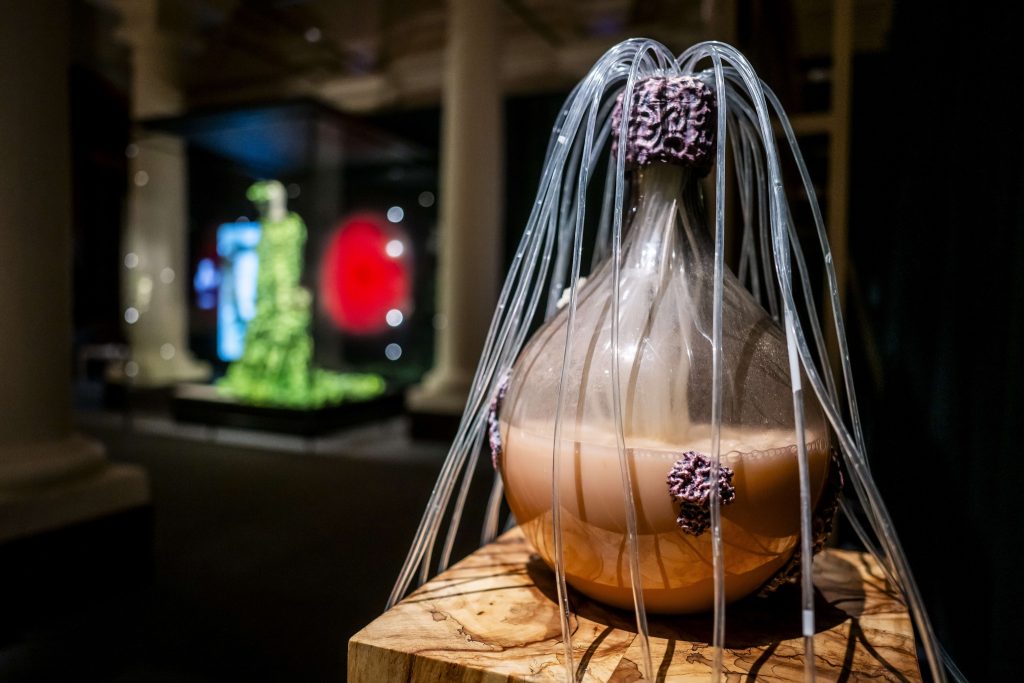
This work brings together various areas of yeast research and points towards efforts in biotechnology to mitigate issues or climate change and plastic pollution. One project resulted in Pichia pastoris yeast, itself originally found in a horse chestnut tree, capable of capturing carbon and using it to produce animal feed, and another where Saccharomyces cerevisiae yeast eats sugar and produces lactic acid.

The artists have worked with researchers to transform the carbon capturing yeast using CRISPR/Cas9 so that it can also produce lactic acid, and are beginning the directed evolution process to improve its tolerance to the lactic acid it produces. They have extracted the small amount of lactic acid produced by the modified Pichia pastoris yeast, and combined it with a larger quantity from the lactic acid producing Saccharomyces cerevisiae and create their own 3D printing PLA filament from scratch.
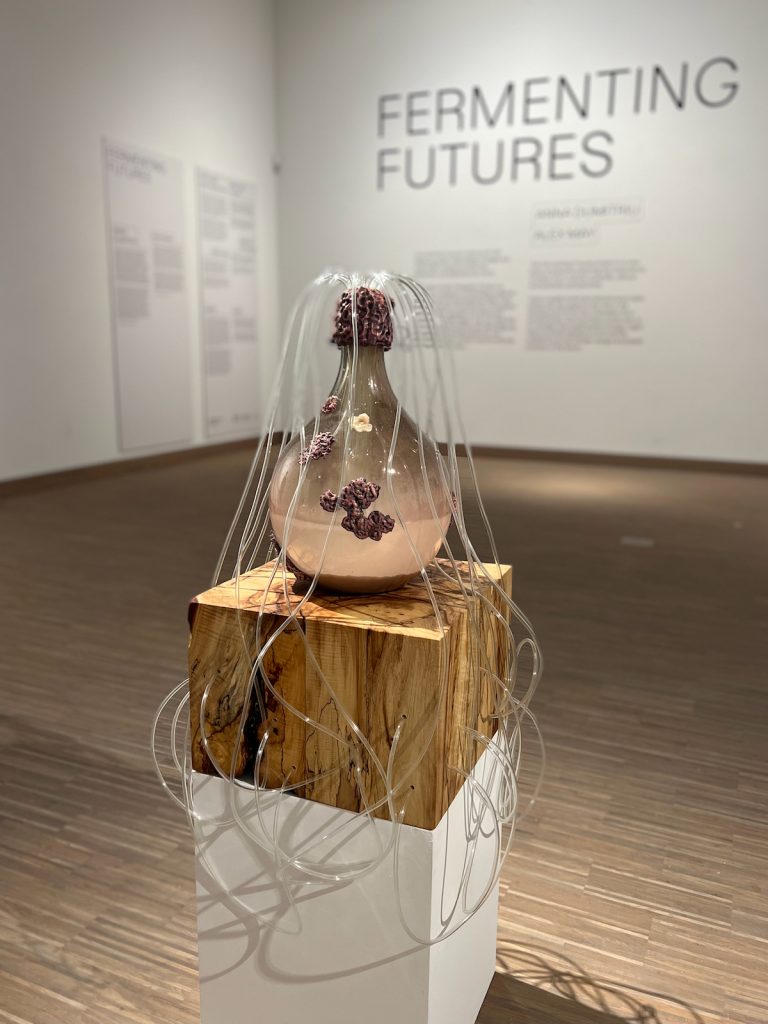
The aim of the work is to think about environmental pollution, and explore the use of yeast biotechnology to confront these global problems, as our atmosphere chokes with carbon dioxide and our seas clutter with plastic.

The Bio-archaeology of Yeast

“The Bio-archaeology of Yeast” investigates the field marks created by yeasts on antiquities, artworks and sites of cultural heritage, as habitats for extremophile fungi, known collectively as ‘black yeasts’. It explores these bio-deteriorative microorganisms, not as something to be cleaned away, but as the objects of aesthetic appreciation in themselves, a perspective usually only available to the researchers in the lab in their more reflective moments. The artists produced moulds from 3D photogrammetry scans of ‘black yeast ‘colonies, grown in culture for many months, and cast them into sculptures using Roman cement, which is their preferred substrate. The sculptures were then placed into liquid media containing black yeasts, and colourful mutants, and stained by them as they began their process of beautiful decay.
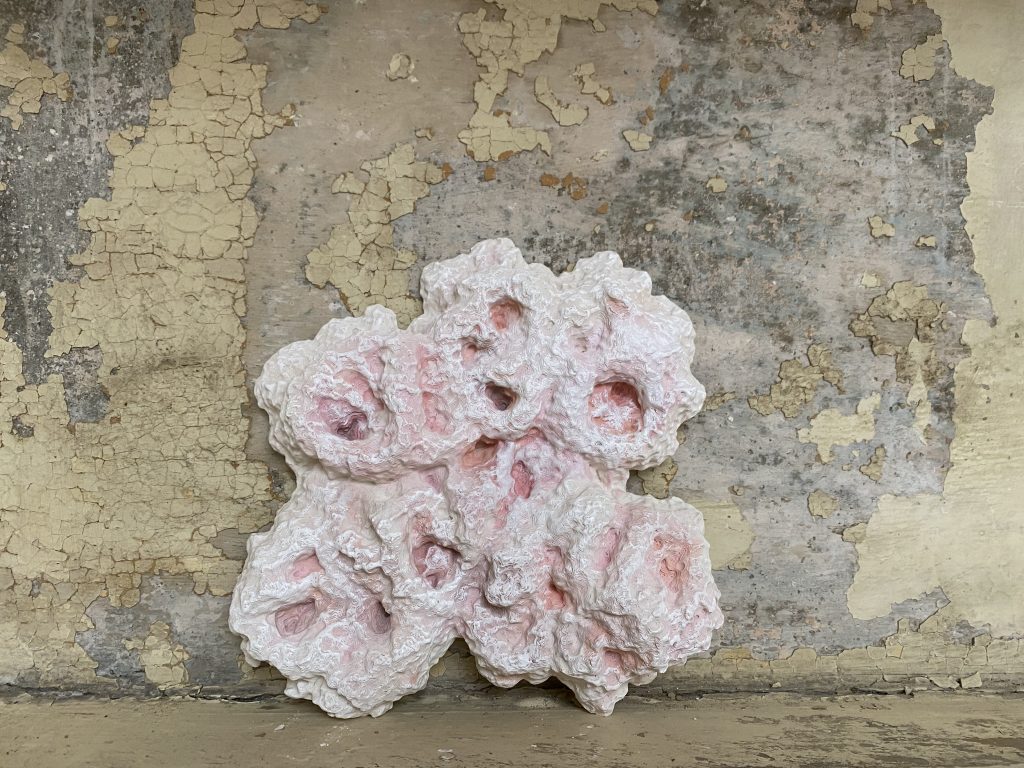
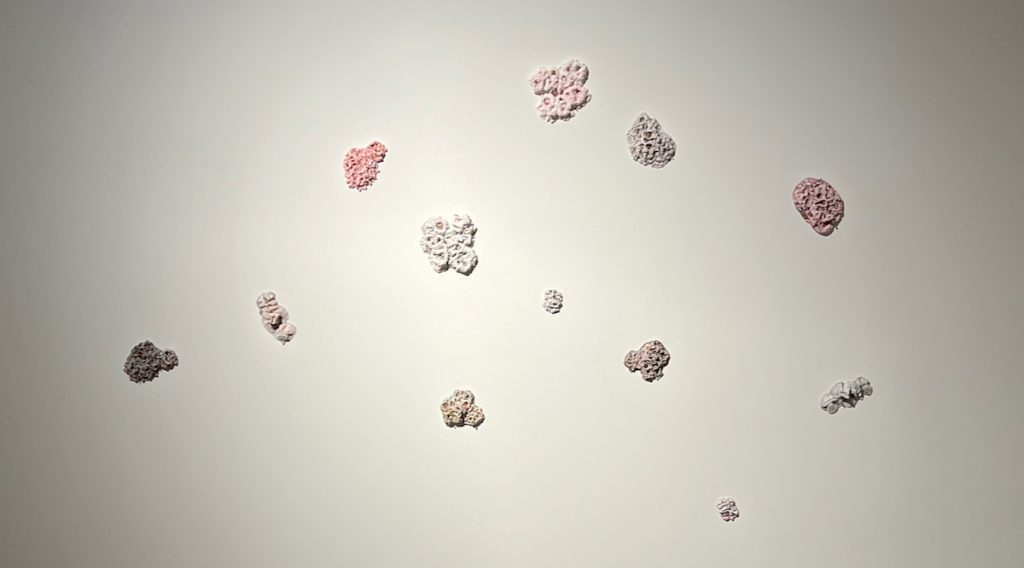
Culture
In “Culture” we explore the co-evolution of yeast and humans and investigate the relationship of fermentation, bread, beer and human settlement, and the idea that this relationship might actually be directed by yeasts rather than humans. Our collaborators discovered the genetics behind fermentation – and used CRISPR to give a non-fermenting Pichia pastoris yeast the ability to make bread rise.

In the installation a jumble of breadcrumb-encrusted architectural models made with this novel yeast emerge from a bed of soil. The buildings are piled one on top of the other, or side by side, representing the development of culture. They are furnished and wallpapered – wired with electric lights – and illuminated by the glare of tiny screens, visible through 3D printed windows and doors.

Pigments
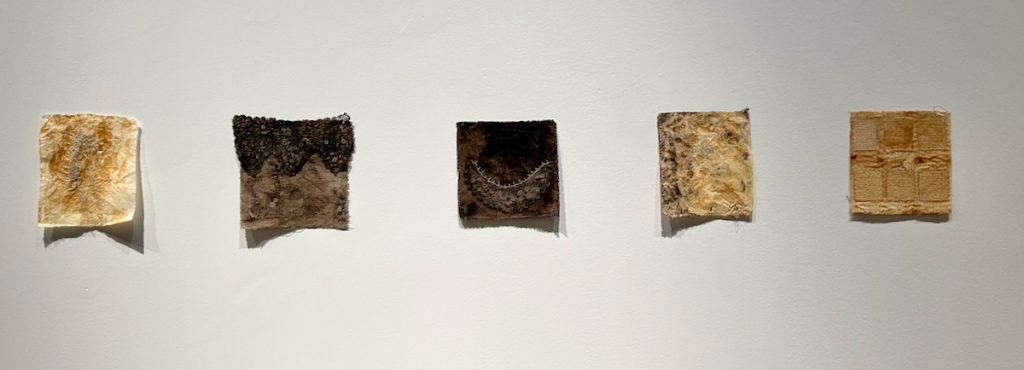
“Pigments” is a series of textiles works that explore how yeasts naturally produce pigments such as melanin to protect themselves from sunlight, just as humans do. Microbial pigments are being studied as a sustainable alternative to chemical dyes for use the fashion and food industries.
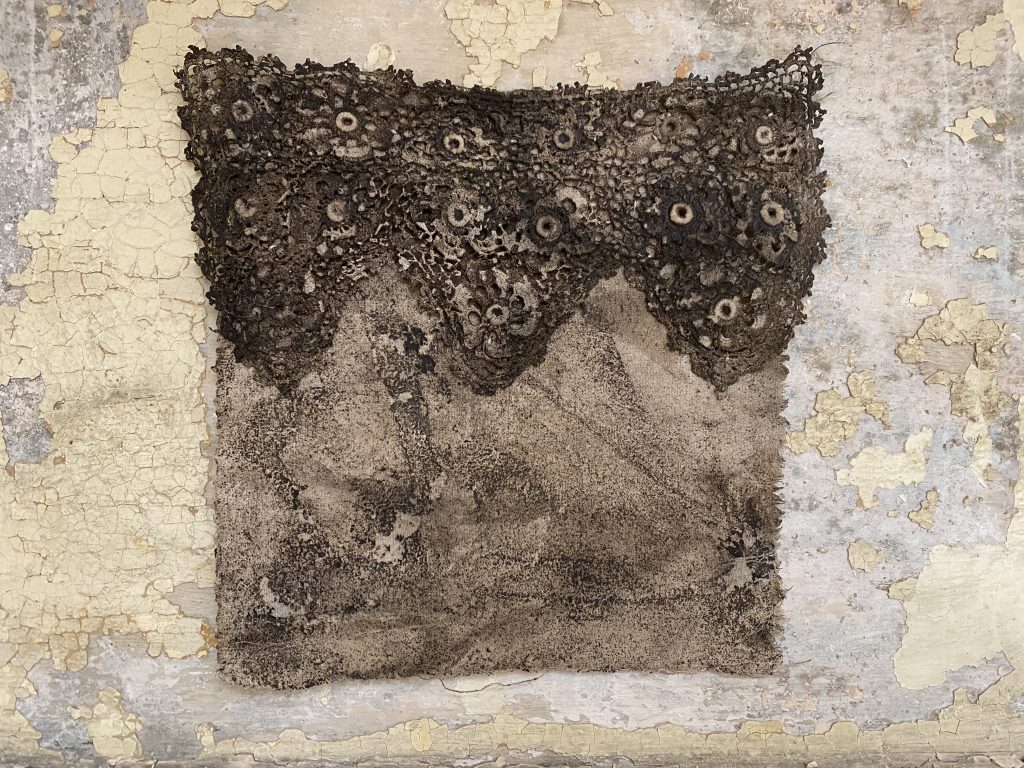
Wood Spirit – Amber Acid
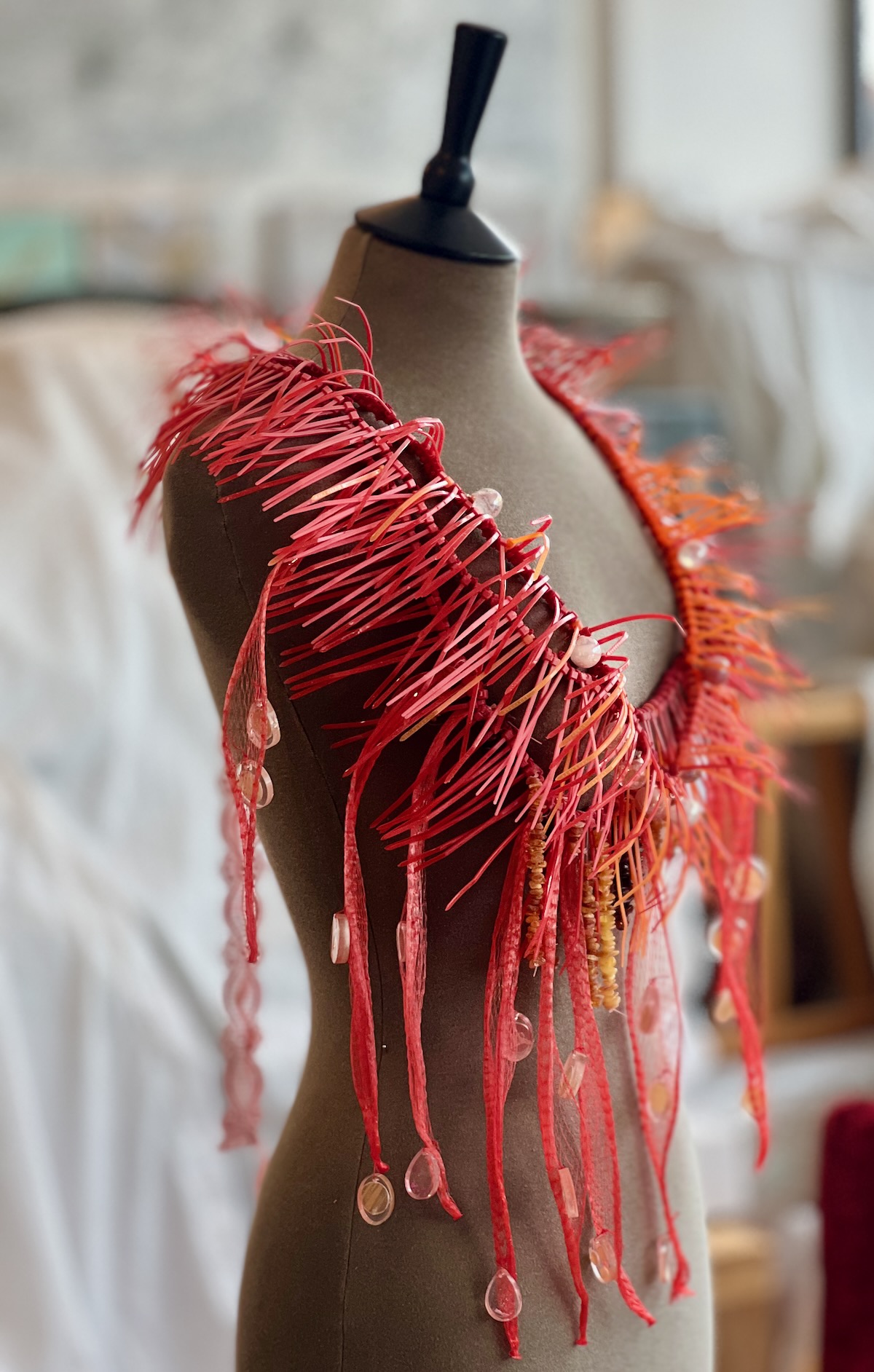
Wood Spirit – Amber Acid
Wood Spirit – Amber Acid (2023) is a commission in the “Fermenting Futures” series that takes the form of a sculptural necklace which tells the story of cutting-edge biotechnology research to produce sustainable carbon neutral nylon fabric via a yeast known as Pichia pastoris that has been modified to be able to feed on a methanol (which used to be produced via the destructive distillation of wood and was known as ‘wood spirit) and output succinic acid which was historically obtained from amber by a distillation process and was known as amber acid.
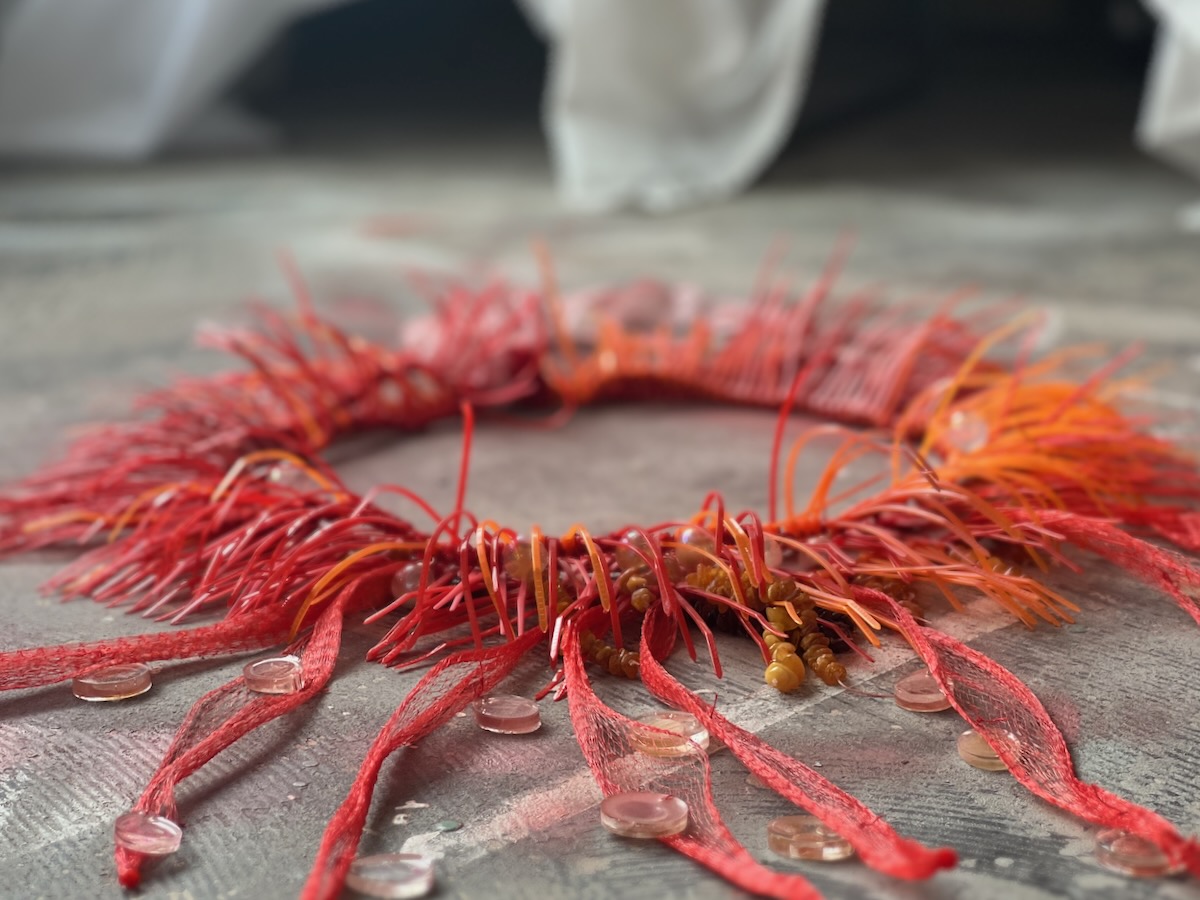
Succinic acid is also used to create orange, red and purple acrylic paint pigments such as those used in this artwork. The work has been made used nylon fibre, amber, killed Pichia pastoris yeast expressing succinic acid and mCherry, glass, metal, resin, succinic acid, acrylic paint containing quinacridone pigments and diketo-pyrrolo-pyrrole pigment.

Exhibitions, Outcomes and Media Coverage
“Wood Spirit: Amber Acid” will be exhibited at the 16th International Congress on Yeasts at Cape Town International Convention Centre in South Africa, from 29th September to 3rd October 2024.

“Fermenting Futures” and “The BioArchaeology of Yeast” is currently on show as part of “INVISIBLES. La vie cachée des microbes” at the Musee De La Main in Lausanne, Switzerland. The exhibition opened on 26th June 2024 and continues until 4th January 2026.

“Fermenting Futures” was part of the exhibition “Touch Nature” exploring of the role of art in addressing the ecological crisis. The work was shown at SAC @ Berthelot in Bucharest, Romania from 30th April to 29th June 2024. Curated by Sabine Fellner and Alex Radu. The exhibition was featured in the media including on Curatorial.ro, Radio Romania International, and Romanian Cultural Radio.
“Wood Spirit: Amber Acid” was exhibited as part of the Austrian Long Night of Researchers at BOKU University in Vienna, Austria, 24th May 2024.
“Wood Spirit: Amber Acid” was part of “BioArt Knowledge” at the Yarrow Gallery, Oundle, UK from 9th November to 6th December 2023.
“Wood Spirit: Amber Acid” was part of BioArt Revolution/ Revoluția BioArt, an innovative solo exhibition by Anna Dumitriu which brought together contemporary artistic approaches and modern scientific experiments to address issues of global relevance such as infection, climate change, and diversity took place as part of Timișoara 2023 European Capital of Culture, from 30th September to 1st October 2023. The exhibition, which was created in collaboration with the Romanian Science Festival, took place in the stunning setting of Bastionul Maria Theresia, Galeria 2, Str. Hector, nr. 1, Timișoara, Romania.
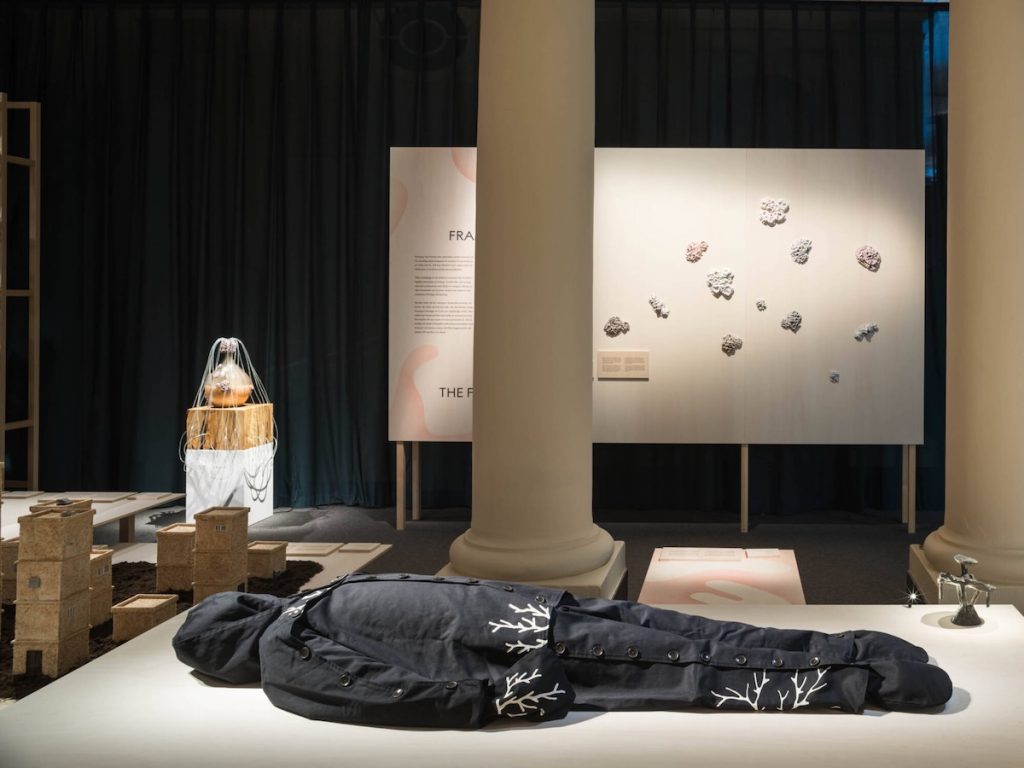
“Fermenting Futures” and “The BioArchaeology of Yeast” and “Culture” were exhibited in “Fungi: In Art and Science” at the at the Nobel Prize Museum in Stockholm (Sweden) from 30th September 2023 – 7th January 2024. The exhibition also featured work by Carsten Höller, a dress and mask worn by Bjork, a mycelium leather coat by Balenciaga and a burial suit by Jae Rhim Lee (also pictured).
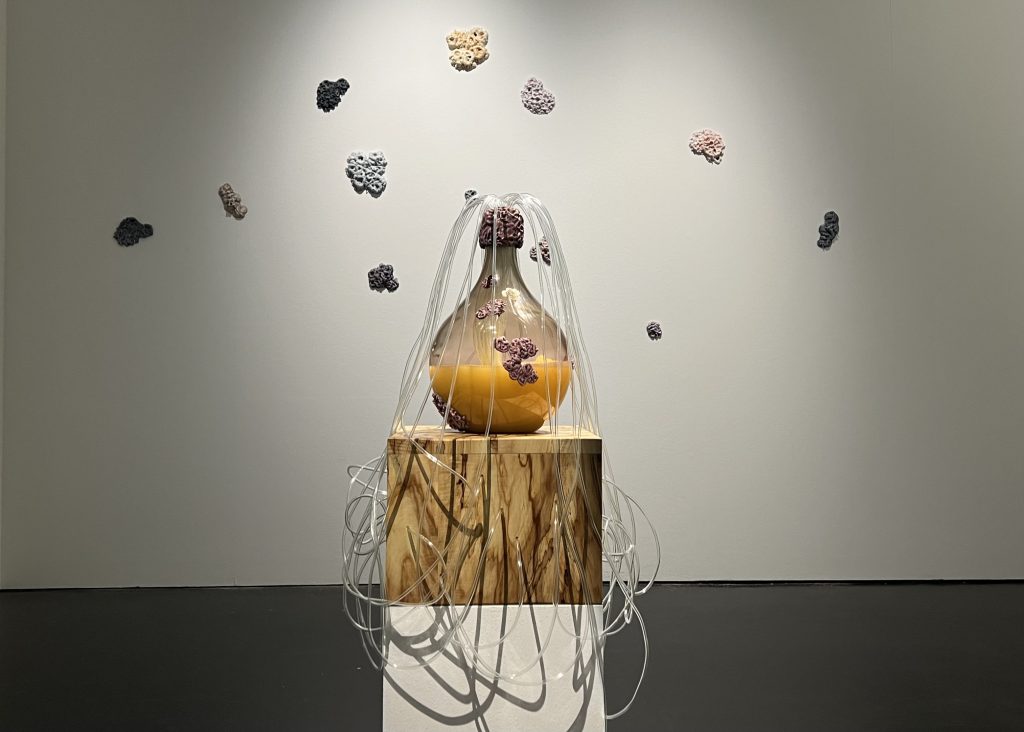
“Fermenting Futures” and “The BioArchaeology of Yeast“, was exhibited in “Renaissance 3.0“, at ZKM | Center for Art and Media, in Karlsruhe, Germany, from 24th March 2023 and extended until 25th February 2024.
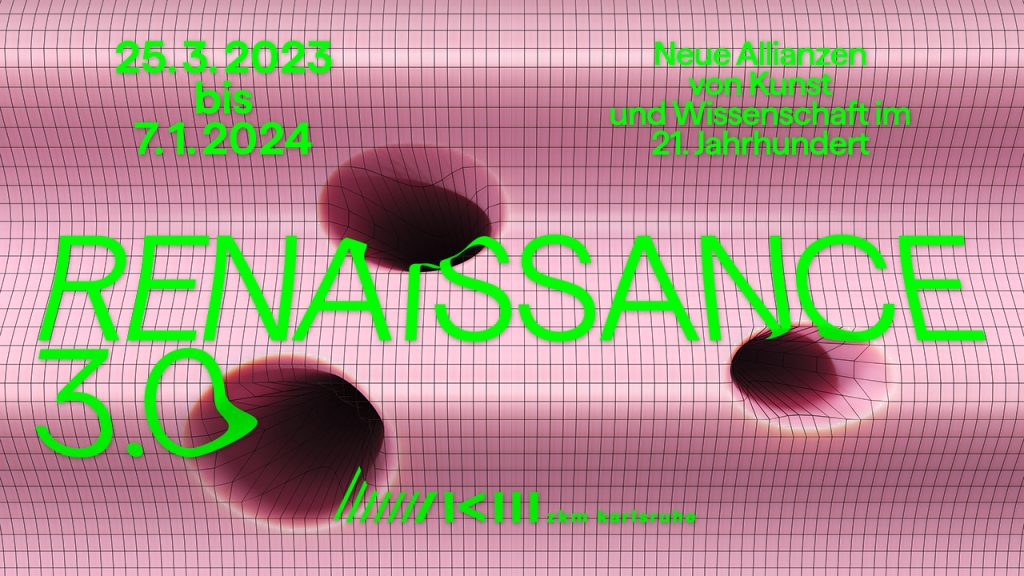
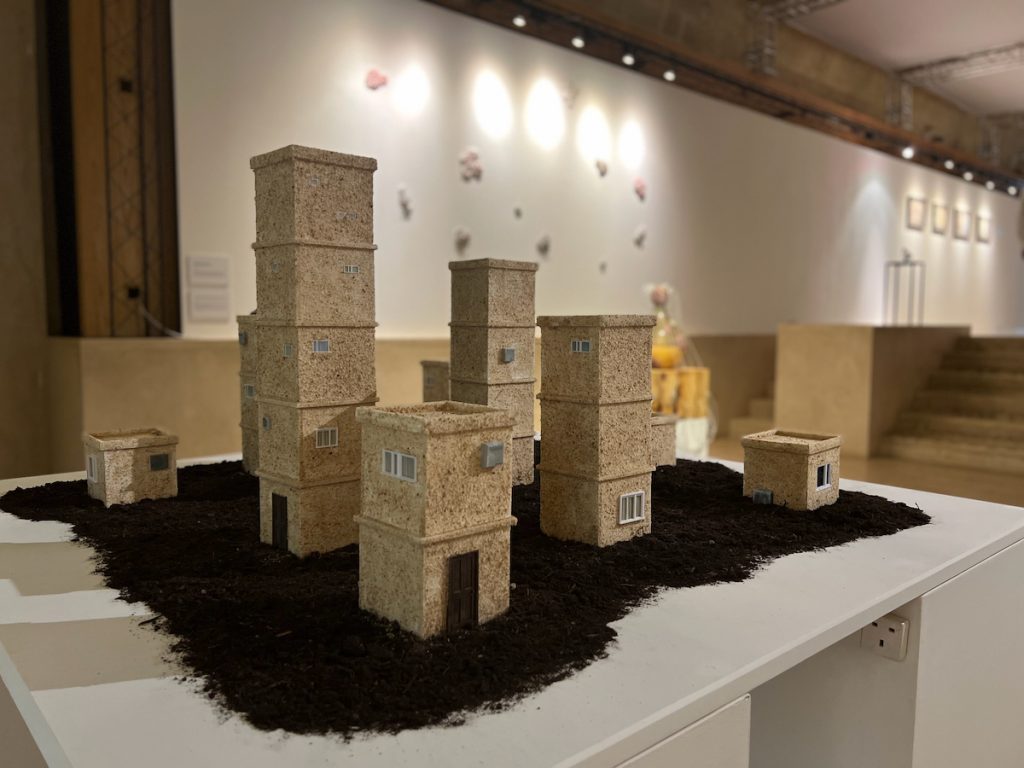
The whole “Fermenting Futures” series was shown at Spazju Kreattiv in Valletta, Malta, as part of “BioArt Alchemy” a solo exhibition of works by Anna Dumitriu. The exhibition ran from 16th September 2022 to 30th October 2022.
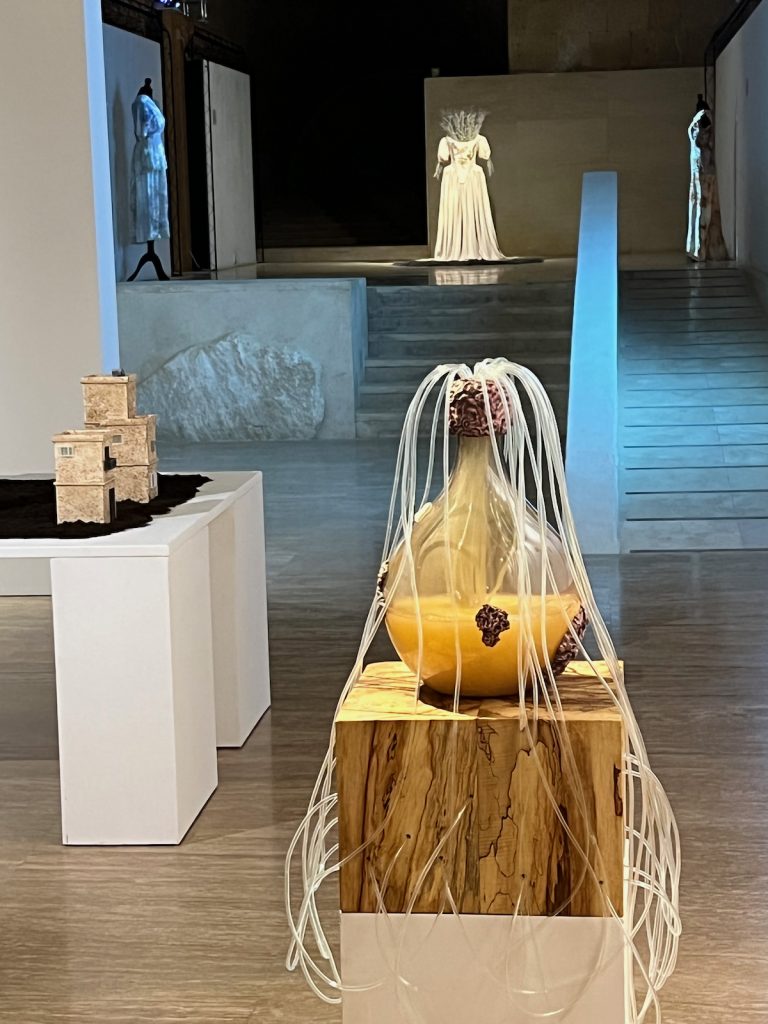
“The BioArchaeology of Yeast” was shown at The North Wall in Oxford, UK, as part of “Collateral Effects” a solo exhibition of works by Anna Dumitriu. The exhibition ran from 5th to 29th October 2022.
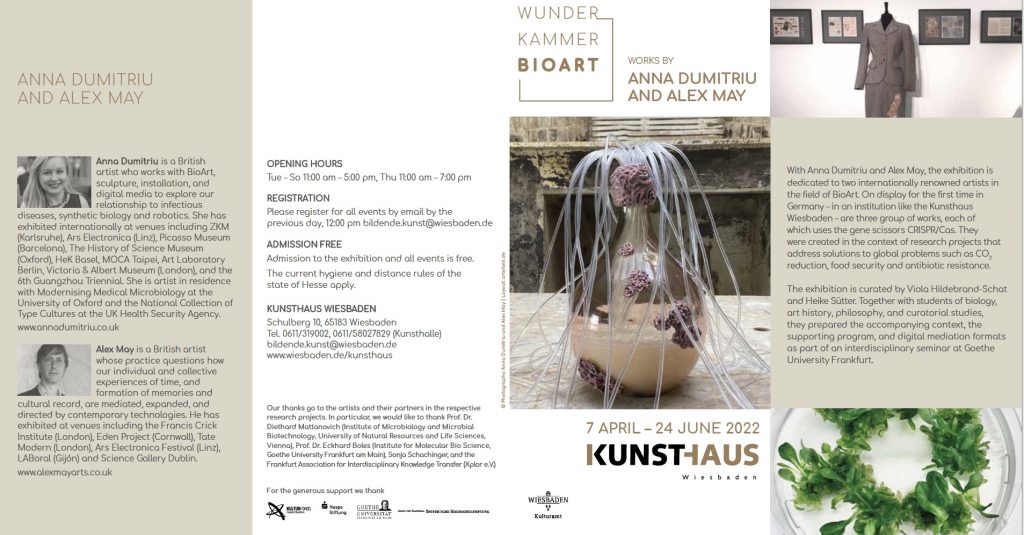

“Fermenting Futures” was exhibited at Kunsthaus Wiesbaden alongside other works such as “Biotechnology from the Blue Flower” and “Make Do and Mend” from 6th April – 24th June 2022 as part of Wunderkammer BioArt – Works by Anna Dumitriu and Alex May.
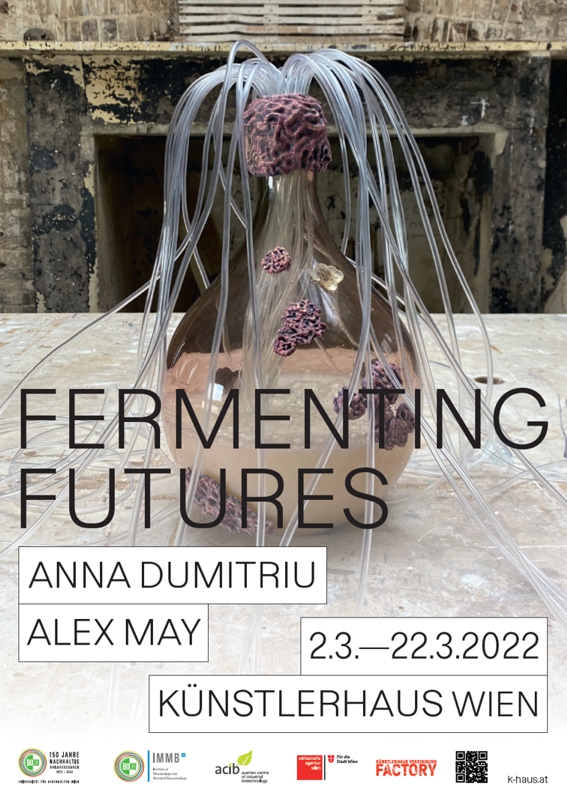
Fermenting Futures by Anna Dumitriu and Alex May was on show between 3rd – 22nd March 2022 in the Factory at Künstlerhaus Wien in Vienna.
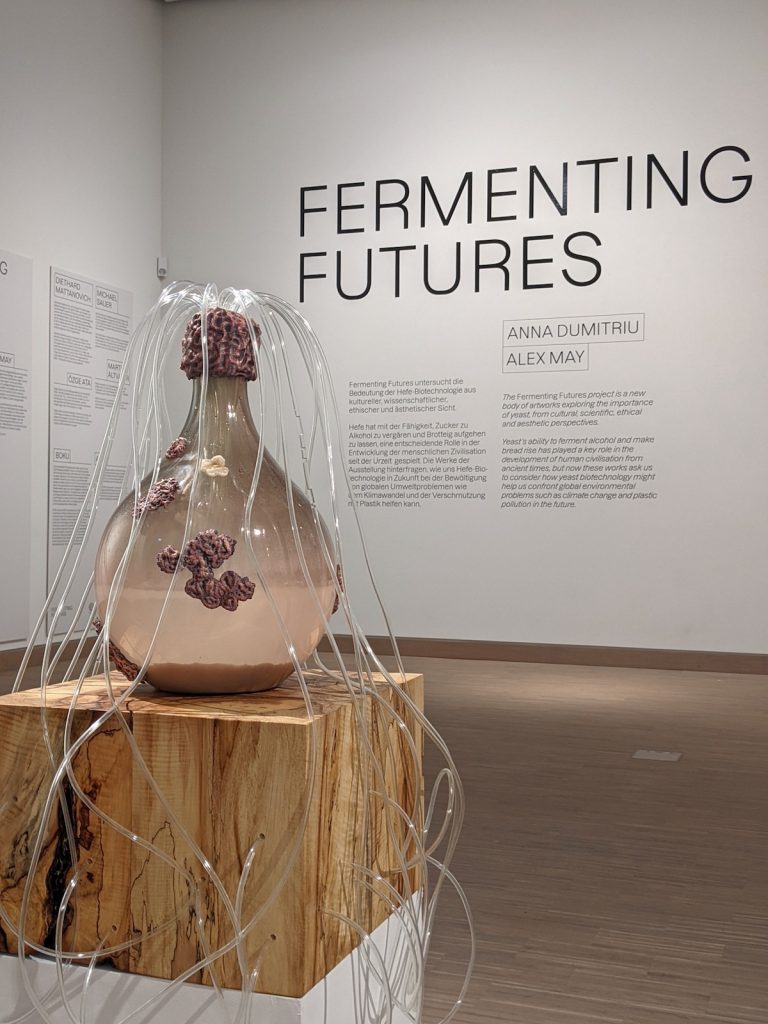
“Fermenting Futures” was featured on ORF 1 Radio (the main Austrian Radio station) in “Processes for the Future” on 7th March 2022 and on ORF1 Science.
“Fermenting Futures” was featured on ORF 1 (the main Austrian TV station) on “Mayrs Magazine – Knowledge for Everyone” on 15th October 2021.
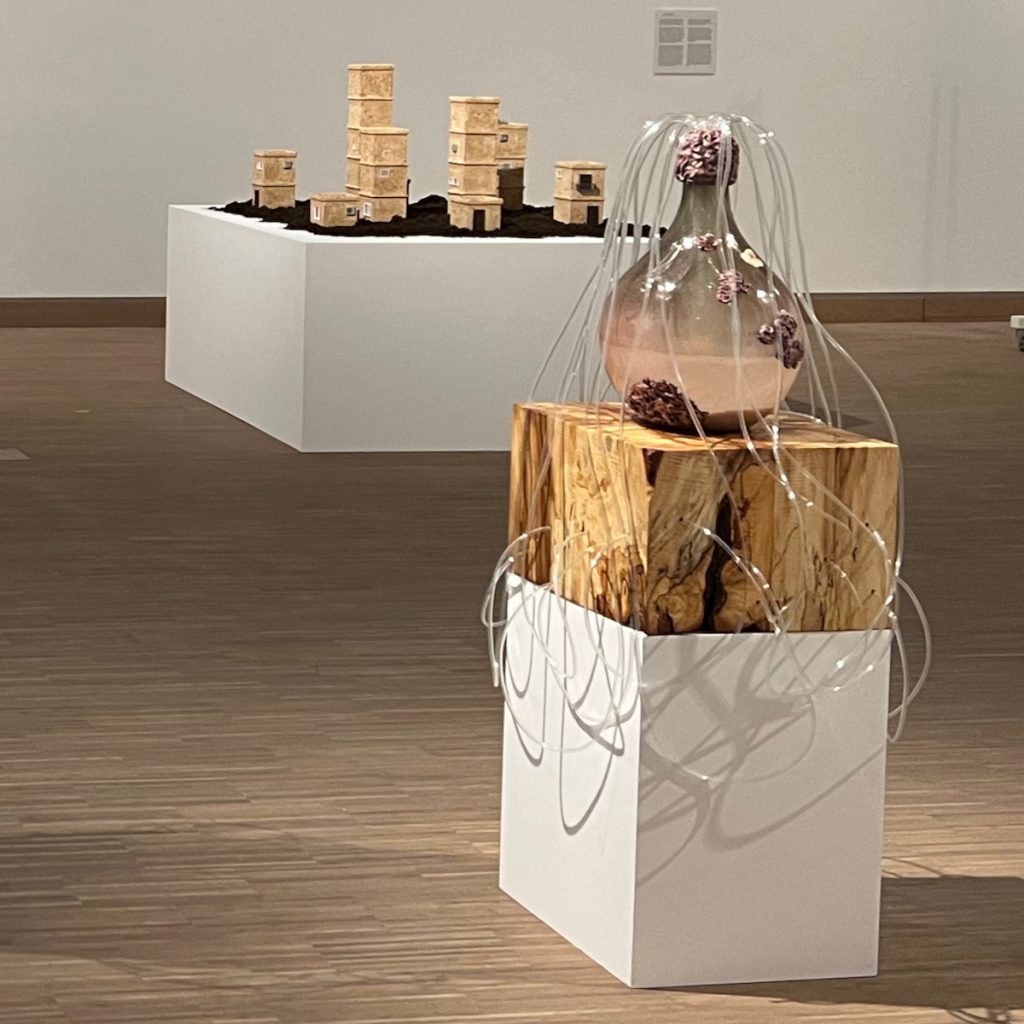
“Fermenting Futures” was a winner in the 2021 Falling Walls Art and Science Category.
“Fermenting Futures” premiered at the 15th International Congress on Yeasts online on 24th August 2021 with an extensive linked physical exhibition programme currently in development, and a paper on the project was recently accepted for publication by FEMS (Federations of European Microbiology Societies) Yeast Research (Oxford University Press, UK). It will be exhibited as part of several major physical exhibitions in 2022.
The team paper have co-authored a paper “Fermenting Futures: an artistic view on yeast biotechnology” for FEMS (Federation of European Microbiology Societies) Yeast Research, published in August 2021 and there is a related blog post on the FEMS Blog by Özge Ata.
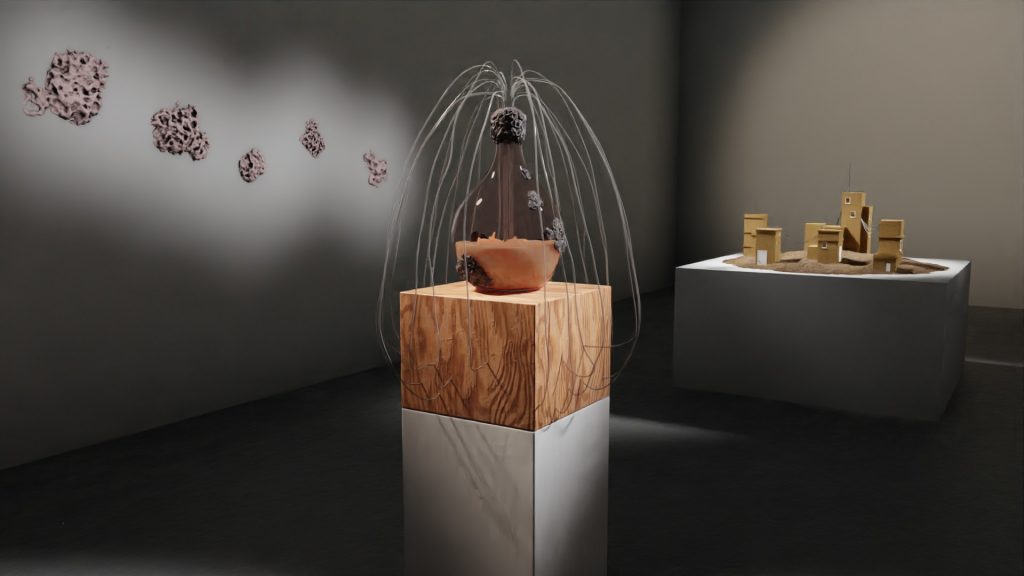
The project ‘in progress’ was featured as part of the STARTS Journeys programme at Ars Electronica 2020 with a video and a short documentary with interviews with project collaborators as well as the artists.
Credit
Fermenting Futures was supported by the Federal Ministry for Digital and Economic Affairs (bmwd), the Federal Ministry for Transport, Innovation and Technology (bmvit), the Styrian Business Promotion Agency SFG, the Standortagentur Tirol, Government of Lower Austria and Vienna Business Agency through the COMET-Funding Program managed by the Austrian Research Promotion Agency FFG. The funding agencies had no influence on the conduct of this work.
Wood Spirit – Amber Acid is being created in collaboration with Professor Diethard Mattanovich, Dr Simone Bachleitner and Dr Özge Ata, Institute of Microbiology and Microbial Biotechnology of the University of Natural Resources and Life Sciences, Vienna, Austria. The piece is commissioned in the framework of their research on succinic acid production funded by the European Union’s Horizon 2020 programme in the frame of the VIVALDI project.
